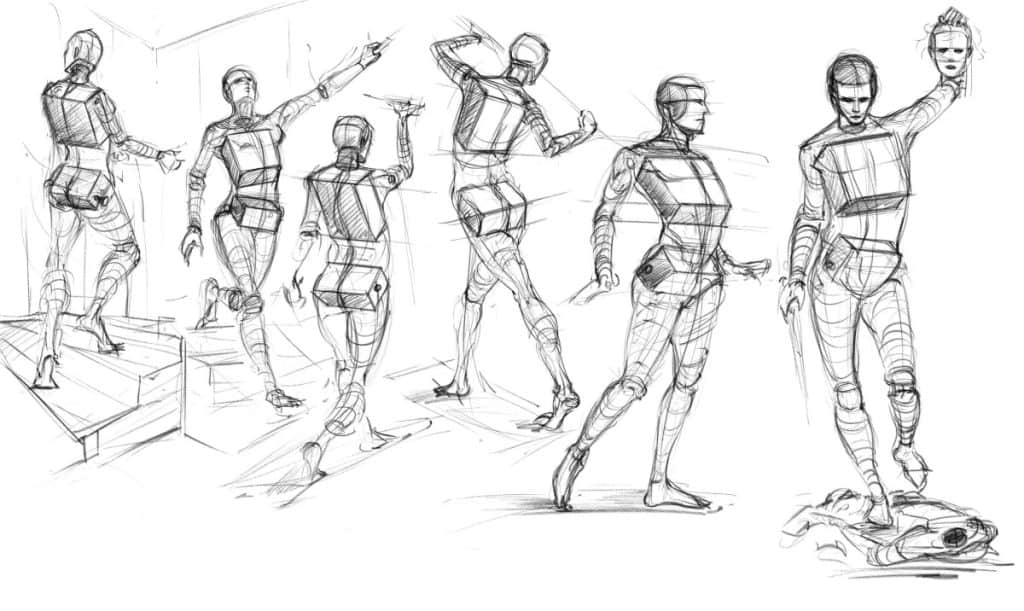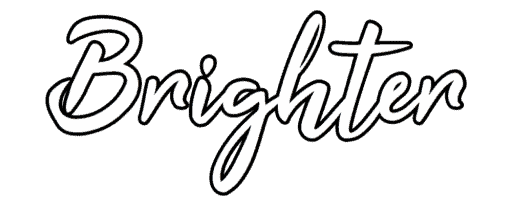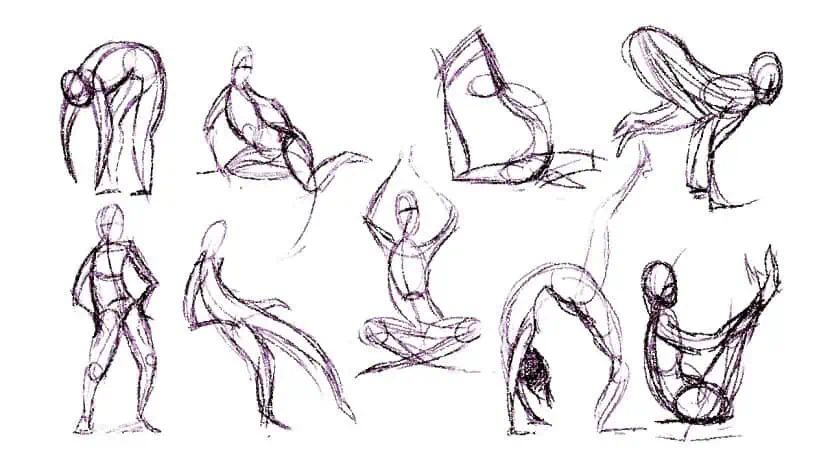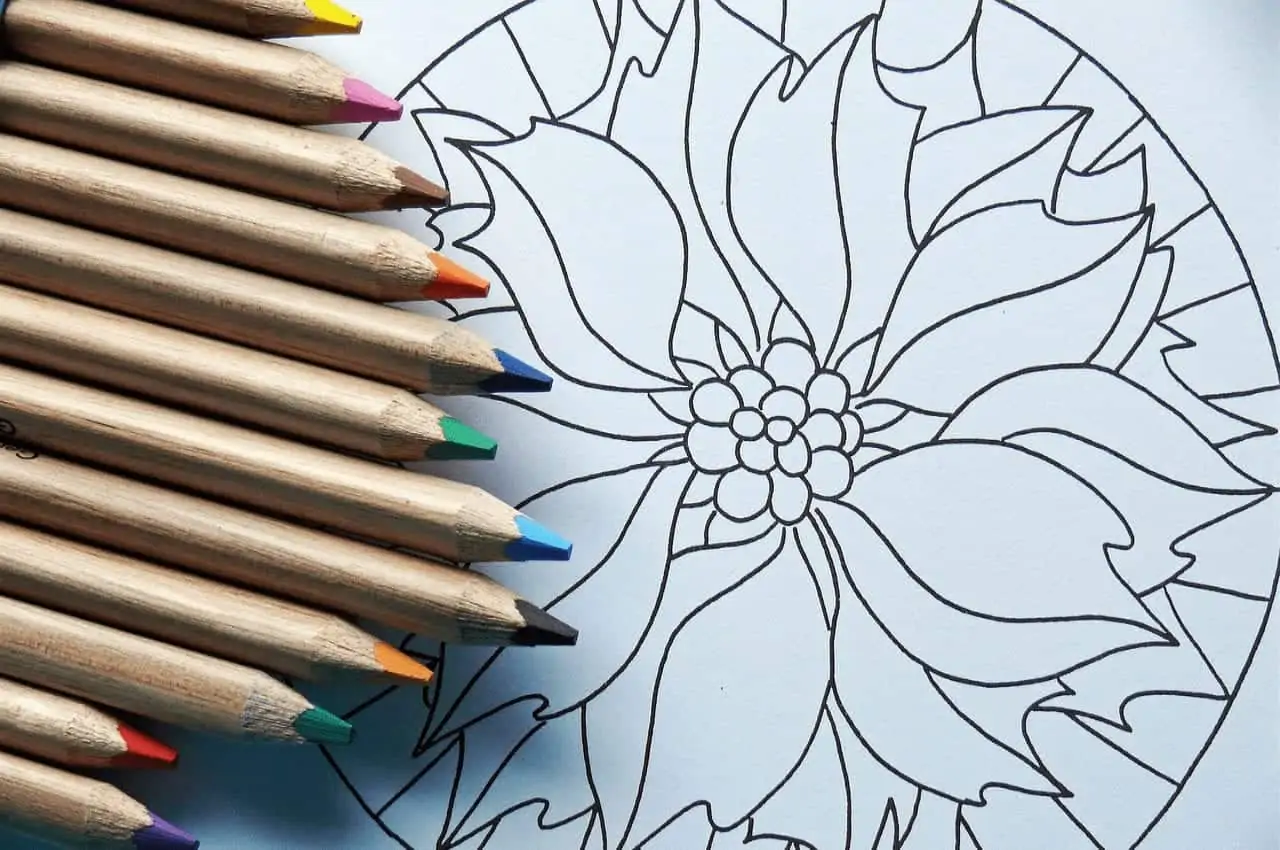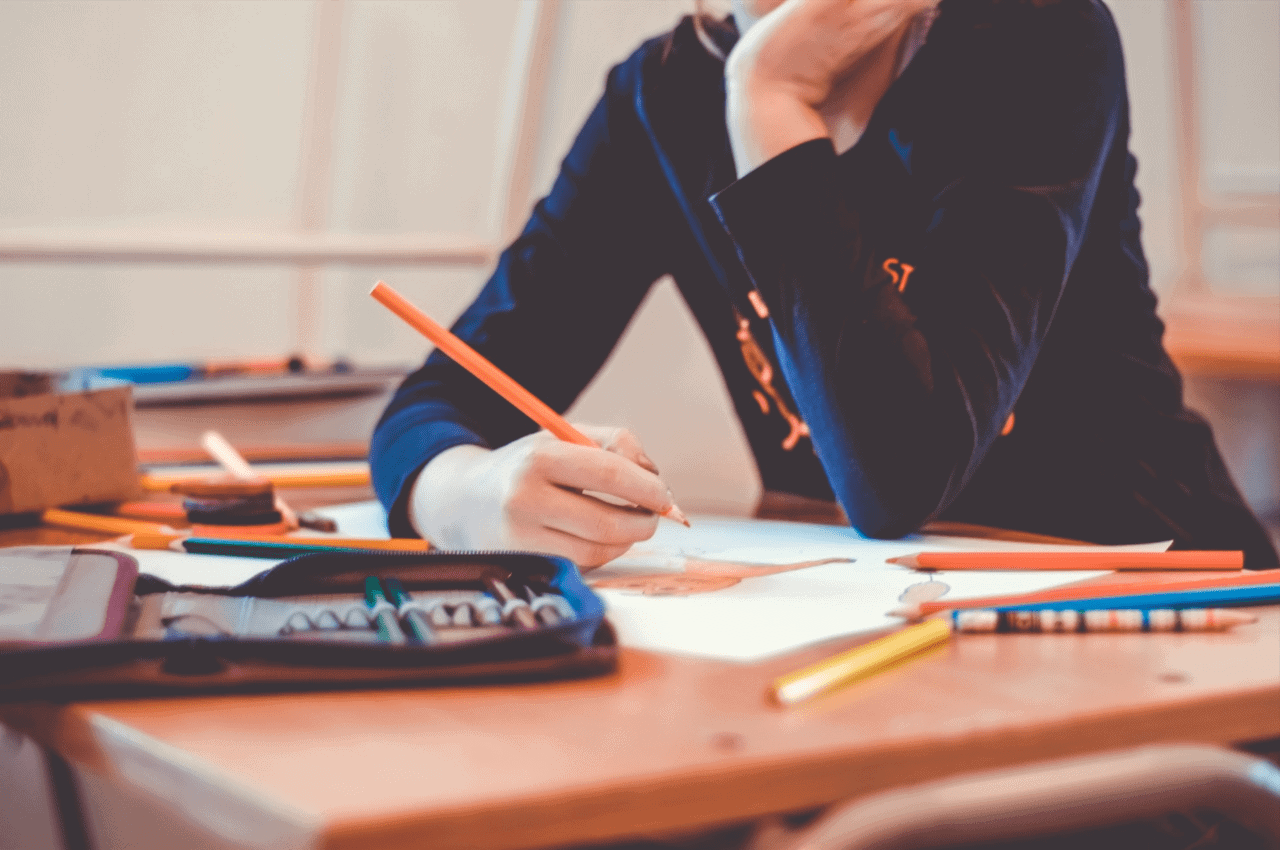Here we look at what gesture drawing is, why it is a really useful way to practice, and how important it can be in your drawing or painting.
As an artist, understanding and perfecting the art of gesture drawing can help you improve your artwork significantly. It is a quick, free-flowing technique that you can use to you can use to help improve both your observational skills and your hand eye coordination. It has been used by many artists over the years and will help you to capture the movement and energy of a subject.
Table of Contents
What Really is Gesture Drawing?
Gesture drawing is a method that artists use to capture the movement and energy of a subject in very basic forms. It is a quick, free-flowing technique that relies on shape rather than details. The idea is to bring life to very simple artwork.
Gesture drawing should be done quickly, it should only take a few minutes. Concentrate on the overall shape of the subject and draw smooth sweeping lines where possible. Don’t get hung up on details, that is not what this technique is about.
One way to highlight any subjects overall shape is to backlight it rather than lighting it from the front. This will create a silhouette effect so that all you can see is the overall shape. This is what you are trying to capture with gesture drawing. Doing this will allow you to sketch a series of drawings very quickly. This in turn will help develop your ability to draw smooth confident lines.
The whole idea of gesture drawing is to capture the dynamic movement of the subject in the static image of your drawing to bring your art to life.
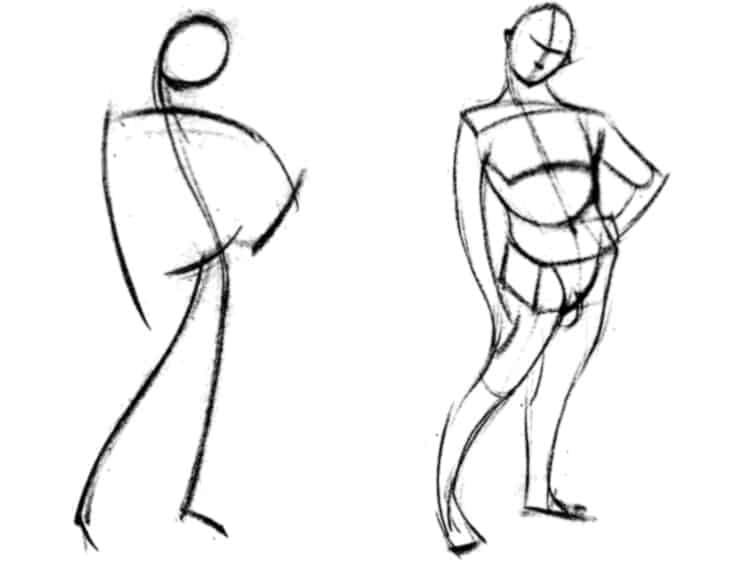
Why is Gesture Drawing Important?
As an artist, understanding and perfecting the skill of gesture drawing can help you improve all your artwork significantly. Gesture drawing is a fast and simple technique that you can use to capture the essence and movement of a subject.
Gesture drawing is a really useful way to practice. It will teach you how to break an image down into simple shapes. This can be really important in more complicated artwork and the skill will help develop your painting and drawing.
Gesture drawing is a fundamental skill that every artist should practice because it:
- Improves Observation Skills – Gesture drawing requires artists to look closely at the subject and capture its movement and energy. Doing this will help you improve your observational skills, allowing you to break a complicated subject up into simple shapes. It will also help you see more details in your subjects and add these details to your artwork.
- Develops Hand-eye Coordination – Gesture drawing is a quick, free-flowing technique that requires the artist to move their hand quickly to capture the essence of the subject. This skill can improve your hand-eye coordination and will help you create more fluid and natural-looking artwork.
- Helps to Break the Habit of Overthinking – Gesture drawing is a fast-paced technique that requires artists to draw without overthinking. This practice can help you develop the habit of drawing freely and with greater creativity. This can help you overcome creative blocks and develop a unique style.
- Enhances Creativity – Gesture drawing can help artists develop their creativity by forcing them to think in simple terms and will help you think outside the box. It is a way to capture the essence of your subject quickly. This technique can help you develop your imagination and create more innovative paintings and drawings dynamic movement .
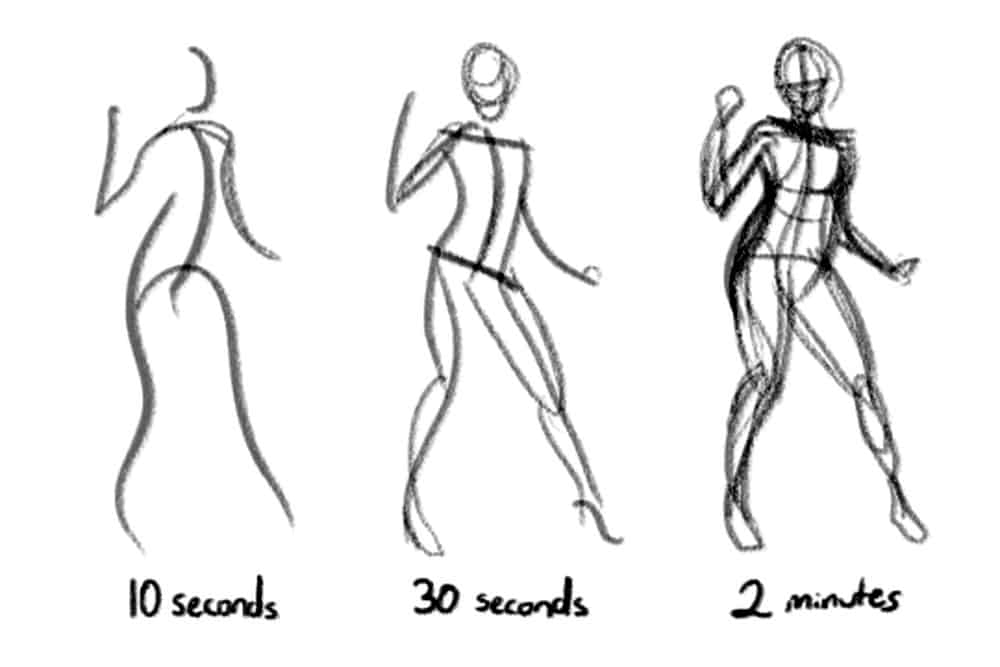
How to Do Gesture Drawing
Now that you understand what gesture drawing is and why it is a great way to improve your art, here are some steps to follow to make practicing easier and more successful:
- Choose Your Subject – If you want to successfully execute a gesture drawing, the first step is to carefully choose your subject. It’s important to select a subject that interests you and offers a challenge. Your subject can be a person, an animal, an object, or even a landscape. However, make sure it’s not too complex, especially if you’re new to gesture drawing. As you become more proficient, you can move on to more challenging subjects. Additionally, experimenting with different angles and perspectives can help you create a more dynamic composition.
- Observe Your Subject – To create an accurate and dynamic gesture drawing, you need to observe your subject carefully. One of the most crucial aspects of gesture drawing is observation. Pay close attention to the movement, energy, and overall essence of your subject. Take note of its pose, gesture, and direction of movement. Observe how the weight distribution of the subject shifts during movement. This step is essential because it will help you capture the essence of your subject in your artwork.
One technique that can help you observe your subject more accurately is to use a viewfinder. A viewfinder is a tool that helps you isolate specific parts of your subject, allowing you to observe them in greater detail. You can create a simple viewfinder using your fingers or a small piece of cardboard with a window cut out.
- Make Quick Sketches – The final step in creating a gesture drawing is to make quick sketches of your subject. You should aim to complete each sketch in just a few minutes. This approach allows you to capture the energy and movement of your subject in a more dynamic way. When making your sketches, keep your lines loose and free-flowing, resisting the urge to overthink or make corrections. Use quick, confident strokes to capture the essence of your subject in just a few lines. At this stage, don’t worry too much about the details; the goal is to capture the overall gesture of your subject. You can use different mediums, such as pencils, charcoal, or ink, to create your sketches.

Final Words
Gesture drawing is a really useful technique that every artist should practice. It’s quick, and the free-flowing technique can help you capture movement and energy in a subject fast.
It is important to remember that gesture drawing like any other skill requires practice. The more you practice, the better you will become. Use gesture drawing as a part of your regular practice and you will get better.
Set aside a little time each day and do a series of quick sketches. It will help develop your observation skills, hand-eye coordination, and creativity.
Don’t dwell on the results, it is the process that you are practicing. As you continue to practice, you will begin to see the improvements in your artwork.
